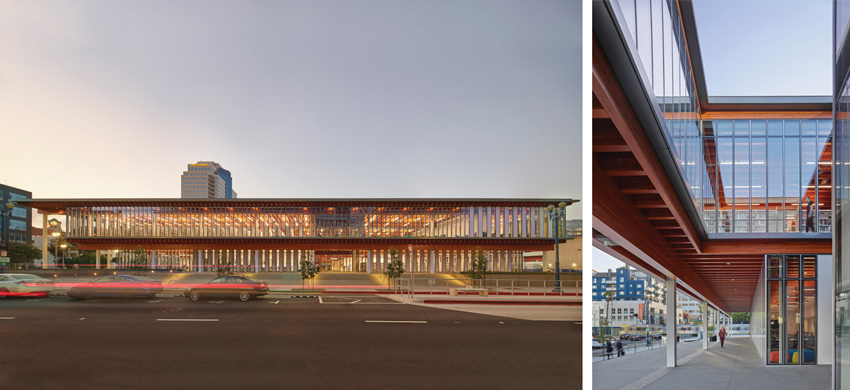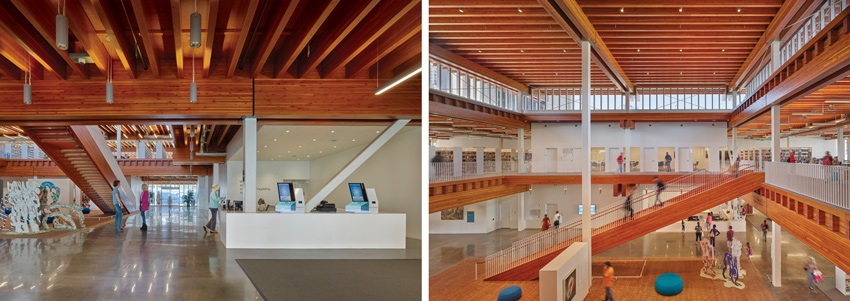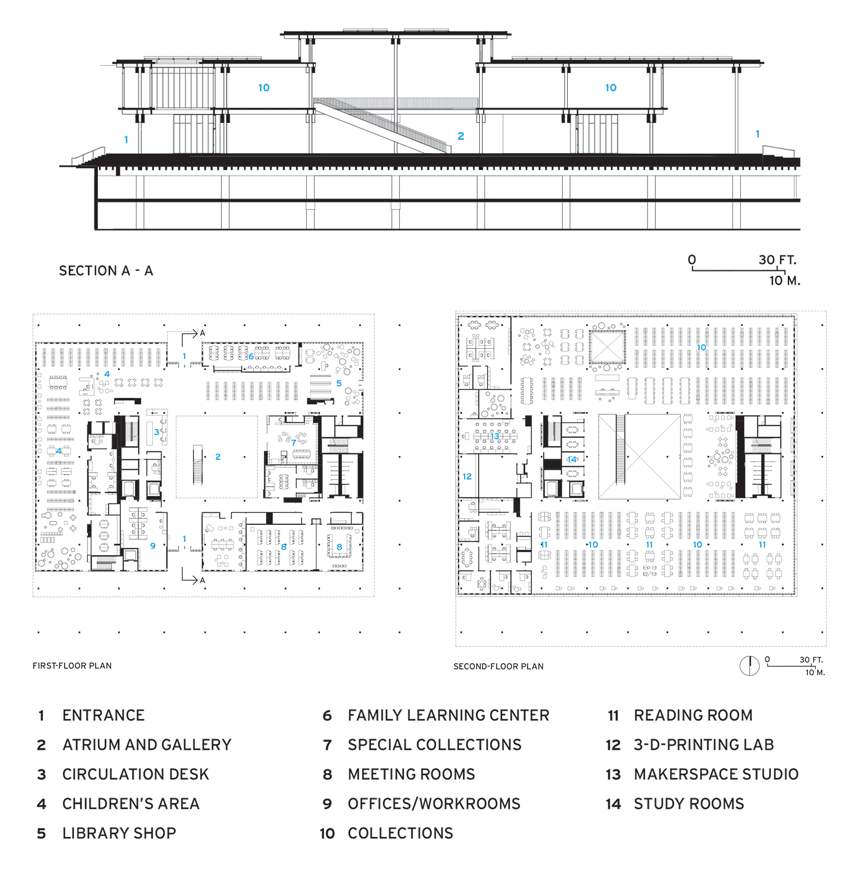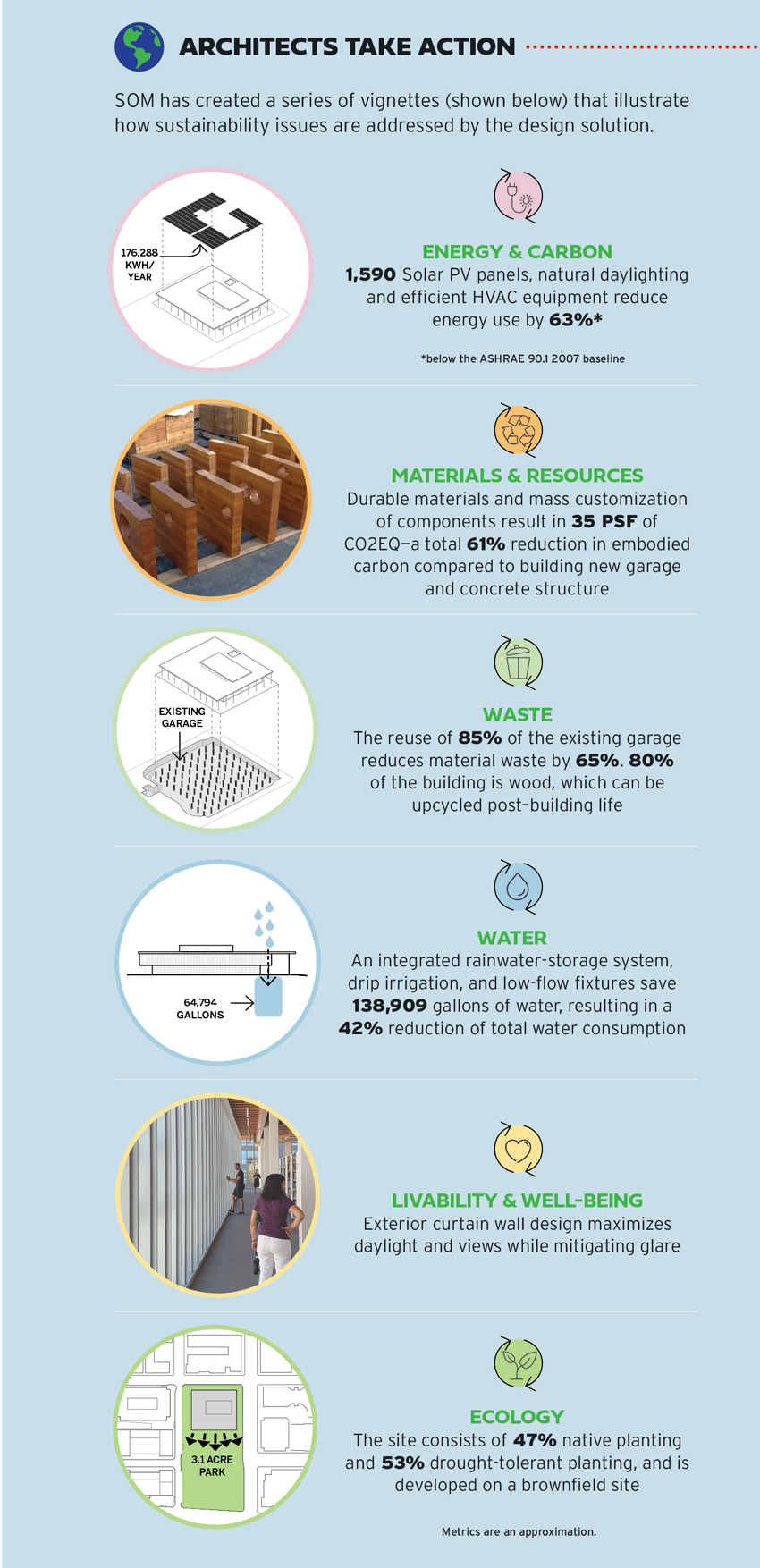Time for Timber
Learning Objectives:
- Describe how the design solution cut the project’s embodied carbon compared with erecting a conventional concrete building
- List two methods employed for earthquake safety to resist lateral seismic movement of the building
- Discuss several ways sustainability issues are addressed by the design solution
- Identify two strategies used to fill the space with daylight
Credits:
This course is approved as a Structured Course
This course can be self-reported to the AANB, as per their CE Guidelines
Approved for structured learning
Approved for Core Learning
This course can be self-reported to the NLAA
Course may qualify for Learning Hours with NWTAA
Course eligible for OAA Learning Hours
This course is approved as a core course
This course can be self-reported for Learning Units to the Architectural Institute of British Columbia
OVER THE YEARS following World War II, in which Skidmore, Owings & Merrill (SOM) rose to prominence, its architecture was largely identified with an astute deployment of steel, concrete, and glass using a Miesian vocabulary. Now the firm is showing it can exercise the same finesse with timber as the structural solution. This natural material composes 80 percent of the new Billie Jean King Main Library in Long Beach, California—named for the legendary tennis player who grew up there and presided over the building’s dedication last September. The design solution—a long, rectilinear framework of glass and reddish Douglas fir—offers a fitting homage to the athlete famed for the power of her serves and the efficiency of her ground strokes and volleys.

Photography by Benny Chan/Fotoworks
REACHING OUT The entrance for the north facade (left) of the Billie Jean King Main Library is sheltered by an expansive porch. At the entrance, a two-story light well opens to the sky and illuminates each floor (right).
Wood made sense for the new two-story, 93,500-square-foot building, explain Paul Danna and José Luis Palacios, design partner and design director, respectively, in the Los Angeles office of SOM, since the city wanted to keep intact an existing underground parking garage on the site. A timber framework for the library could sit lightly on the garage’s concrete columns, and by reusing 85 percent of that existing structure, material waste for the new project would be reduced by 65 percent. On top of this sustainability strategy (sidebar, page 82) is the advantage that the warm tones of the natural material avoid the cold, institutional look of so many contemporary public buildings. “Wood adds instant character to the complex,” says Palacios.
The library especially needed to attract the community with an inviting space, as the outdated former library, built in the 1970s, looked like “a closed bunker,” in the words of Special Collections librarian Jeff Whalen. “Now the library is filled with light,” he adds, pointing to the generous glazing supplementing the wood.
In these days of digital dependency, the staff also did what so many libraries now do—it opted for a rich program of varied activities in which reading and browsing though books is only a small part of the agenda. To lure local residents inside this precinct, the library staff asked for a family learning center, a children’s reading room, a veterans’ resource center, and a cluster of multipurpose community rooms with its own separate entrance. The library also has makerspaces with capabilities for 3-D printing and robotics, and even film editing. And, not to be forgotten, 300,000 books do occupy the shelves.

THE WARMTH OF WOOD Beams, joists, girders, and blocks of stained Douglas fir are boldly expressed in the lobby and the atrium.


The library is located in the northeast corner of the civic center.
Since Long Beach, a booming port city about 25 miles south of Los Angeles, receives abundant sun, the architects designed the low-rise building’s flat roofs—fitted out with a battery of 1,590 photovoltaic modules—with deep overhangs for the expanses of glazed walls. The canopy on the south facade juts out 32 feet, where an entrance overlooks Lincoln Park—undergoing substantial landscaping on the site of the former library, now being razed. Visitors will be able to enter from the park on the south, near the downtown civic center, but for the time being they come in on the opposite side, where an expansive wood-framed “porch” faces a residential neighborhood. To help identify the entrance within this expanse, the architects have carved out a dramatic two-story light well, open to the sky, which you pass through to enter the main space.
Inside, SOM has organized the various spaces around a 39-foot-high atrium with clerestory windows at the top of the second level. Because of the daylight suffusing the interior, the amount of electric lighting needed is reduced.
Yet despite all the transparency and luminosity of the interior spaces, it is the exposed wood structure that steals the show. SOM has treated the various parts and pieces of the library as if they belonged to a Japanese temple: the wood glulam beams, joists, and blocks between the joists create a Constructivist interplay, emphasized by the timber girders that penetrate the glass curtain wall. To heighten the sense of precision, the architects employed a 2-foot module for both the curtain wall and the structure.
















